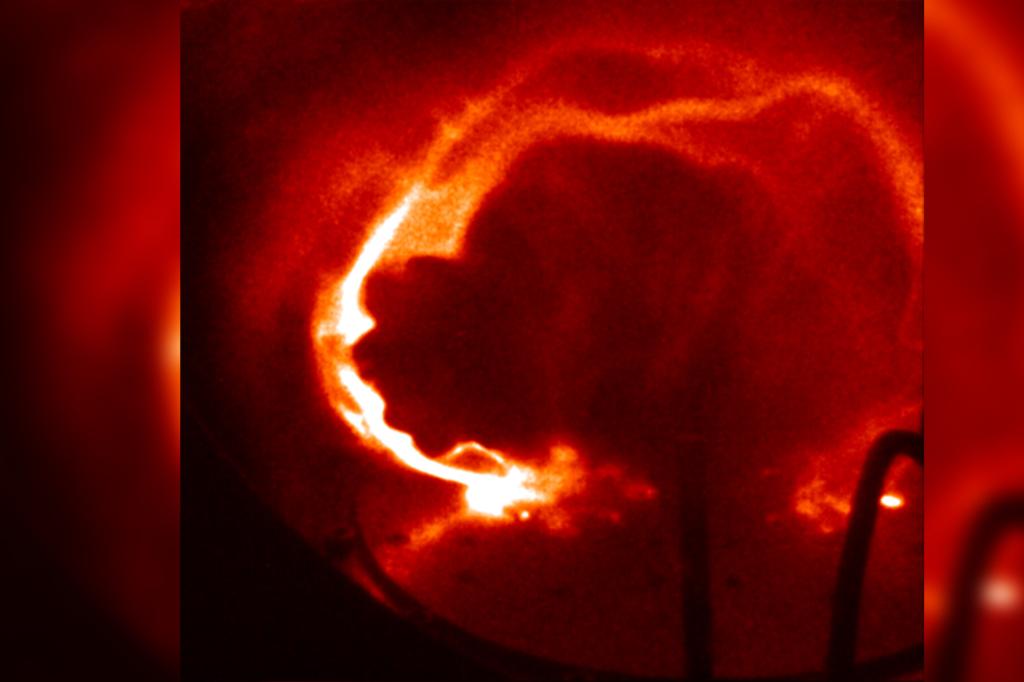[ad_1]
It’s causing some excitement to flare up.
According to an article published in Nature Astronomy, a research lab at the California Institute of Technology (Caltech) managed to create its own solar flare that is small enough to fit inside a lunchbox.
In the study published on April 6, the Caltech team discharged electricity from a pair of electrodes inside a magnetized, gas-filled chamber.
The ionized gas then created a string of plasma between the two electrodes and was contained within the chamber’s magnetic field before collapsing and firing a mini flare outward.
“If you dissect a piece of rope, you see that it’s made up of Braids of individual strands. Pull those individual strands apart, and you’ll see that they’re braids of even smaller strands, and so on,” said lead author Yang Zhang. “Plasma loops appear to work the same way.”
Solar flares that are born on the sun’s surface, form along the magnetic field that is created by the Sun’s gravity and is often ejected from the sun’s surface.
Flares are also known to produce coronal mass ejections (CMEs) which generate fast-moving clouds of magnetized plasma, high-energy particles and electromagnetic radiation that could greatly impact Earth if they collide with the planet.

According to researchers, they managed to detect a slight voltage spike that mimics that of a red solar flare.
This is not the first time scientists have attempted to recreate the sun.
In January 2023, scientists at the University of California, Los Angeles managed to create a miniature sun that mimicked several of the star’s attributes.
“People were so interested in trying to model spherical convection with laboratory experiments that they actually put an experiment in the space shuttle because they couldn’t get a strong enough central force field on the ground,” said Seth Putterman, a UCLA physics professor and the study’s senior author.
“What we showed is that our system of microwave-generated sound produced gravity so strong that Earth’s gravity wasn’t a factor. We don’t need to go into space to do these experiments anymore.”
Scientists also revealed that there is currently a Runway-black-hole-invisible-monster/”>runaway black hole making its way through the galaxy.
“There’s an invisible monster on the loose, barreling through intergalactic space so fast that if it were in our solar system, it could travel from Earth to the moon in 14 minutes,” NASA wrote in a release. ““The black hole is streaking too fast to take time for a snack.”
[ad_2]
Source link
